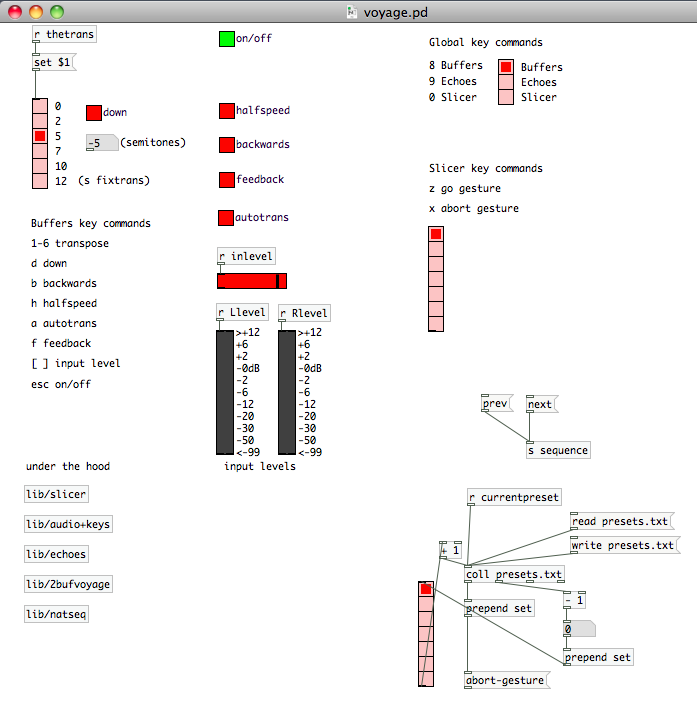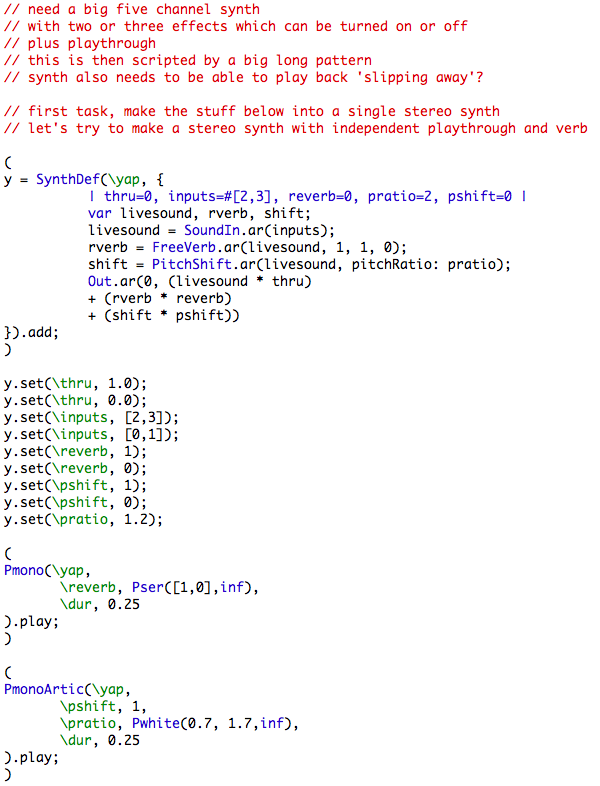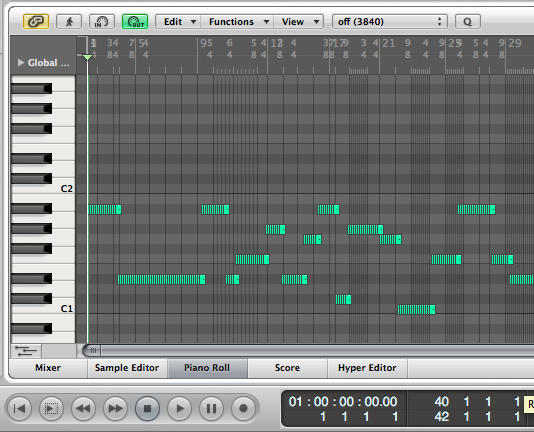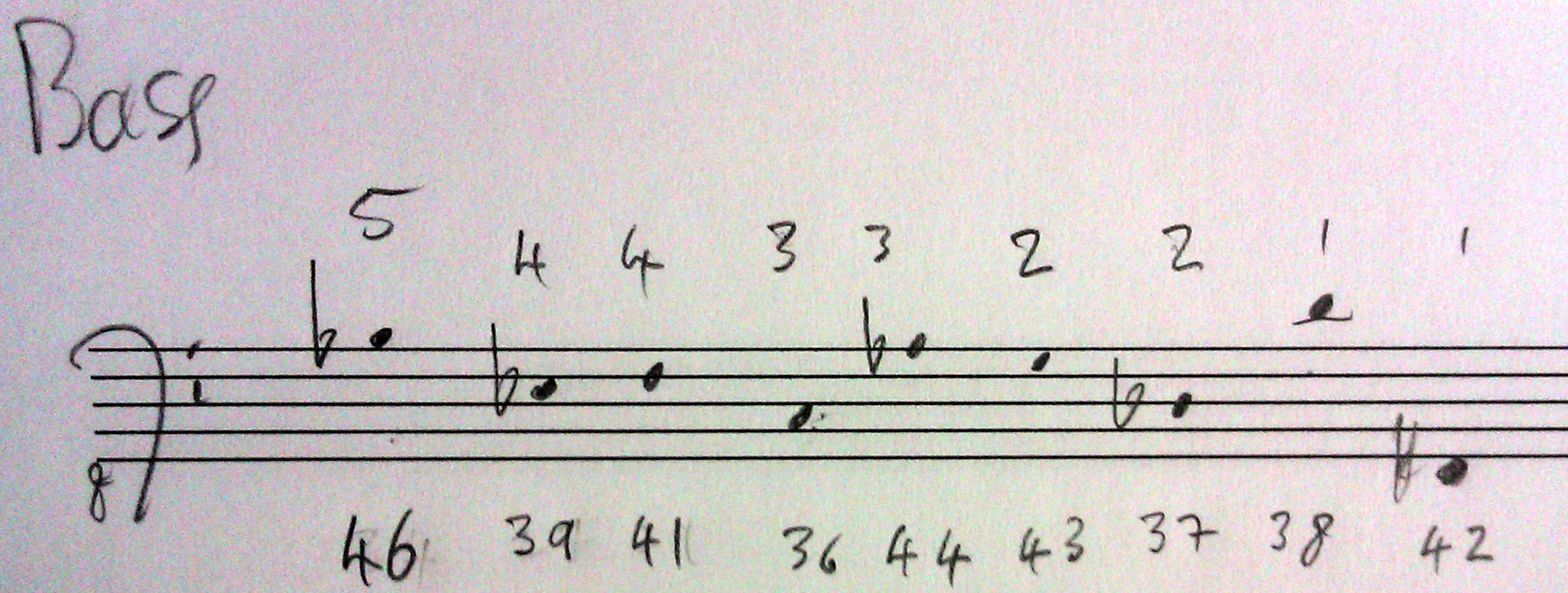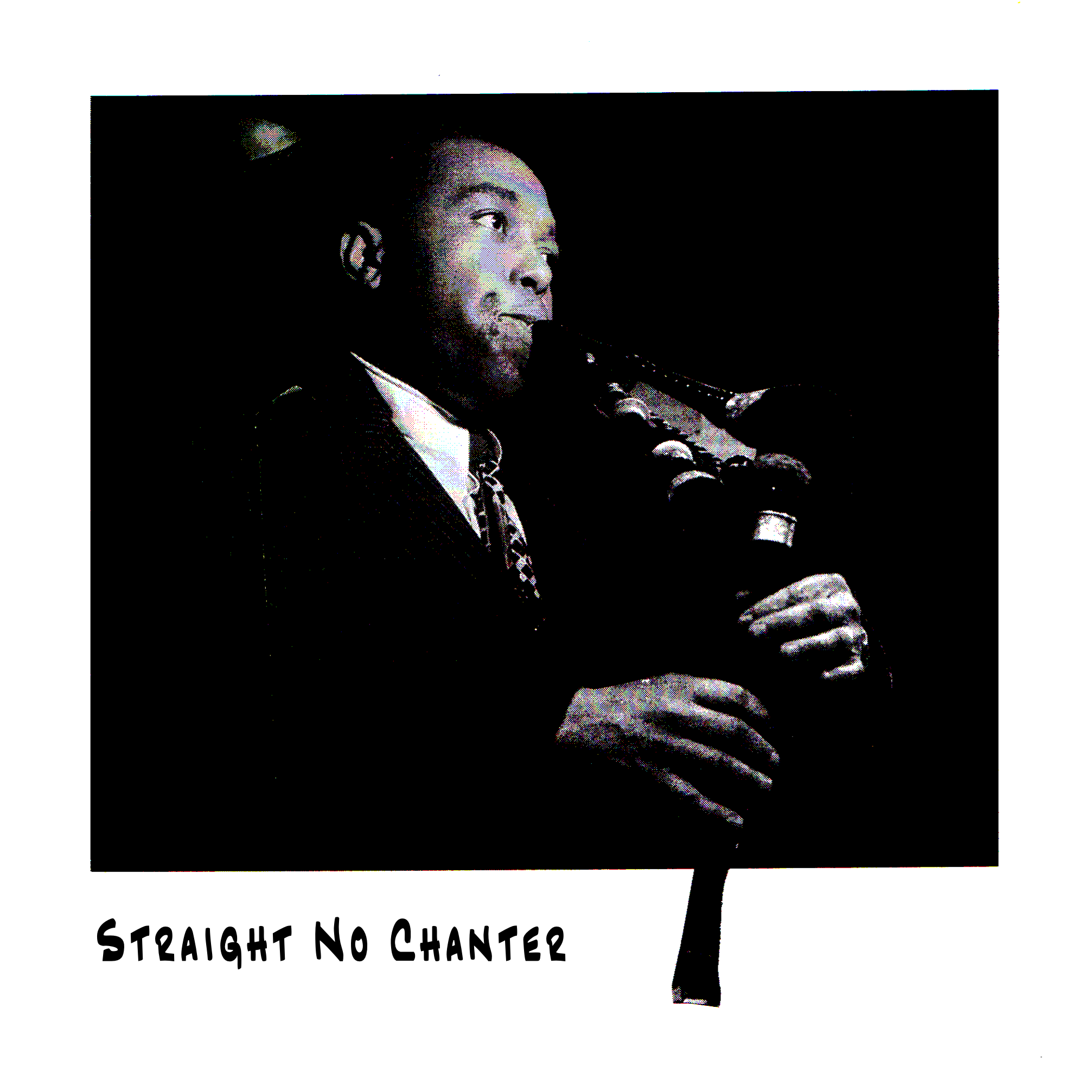Working on 'The Black Rain'
After the success of the 'The Seventh Voyage', I have high hopes for my next two laptop-and-acoustic-instruments pieces, both to be performed at Plug 12 in a month's time. Today I'm working on 'The Black Rain', which is for five players from the Scottish Ensemble - two violins, viola, cello and double bass - and live processing in SuperCollider. Here's the (rather long and convoluted) programme note:
‘When the last trace of the rocket’s presence, a whitish haze, had been absorbed by the atmosphere, when the wandering sandy waves gradually began to cover up the naked rock of the ground, at the same time filling in the deserted digging spaces – only then, much later, did a dark cloud gather in the west. Hovering low above the ground it pushed closer, grew, encircled the landing area with a threatening arm. There it remained, motionless.
As the sun was about to set, a black rain fell on the desert.’
‘The Black Rain’ takes its title from the first chapter of Stanis!aw Lem’s 1967 science fiction novel ‘The Invincible’, in which a mighty spaceship and her crew are overcome by a race of microscopic mechanical flies, individually insignificant, but capable of joining together into a vast quasi-intelligent ‘cloud’: surely one of the first fictional works to speculate on the possibilities of nanotechnology, calling to mind such devices as the nanostats which inhabit Neal Stephenson’s 1995 novel ‘The Diamond Age’, and the EDust, or Everything Dust, in Iain M. Banks 2000 ‘Look to Windward’.
Aesthetically, ‘The Black Rain’ carries forward the composer’s ongoing reconstruction of the career of his fictional alter ego Edward ‘Teddy’ Edwards. Something like:
‘In 1959, Edwards created a work for string quartet (or quintet?) and five (or four?) taperecorders, incorporating radio equipment borrowed from Aldermaston, where he was at the time employed as an engineer on the ill-fated Blue Streak missile system. Working from his original sketches, I have replicated the piece using the music programming language SuperCollider, with the addition of a reconstructed lost (?) part for double bass.’
In terms of musical devices, ‘The Black Rain’ represents, through self-quotation, a critique of a group earlier works of mine (‘smir’, ‘4thought’, ‘5lipside’ etc), all of which float angular melodies across polymetric rhythmic frameworks, usually according to some quartal scheme, and usually, it would seem, in roughly the same key.

